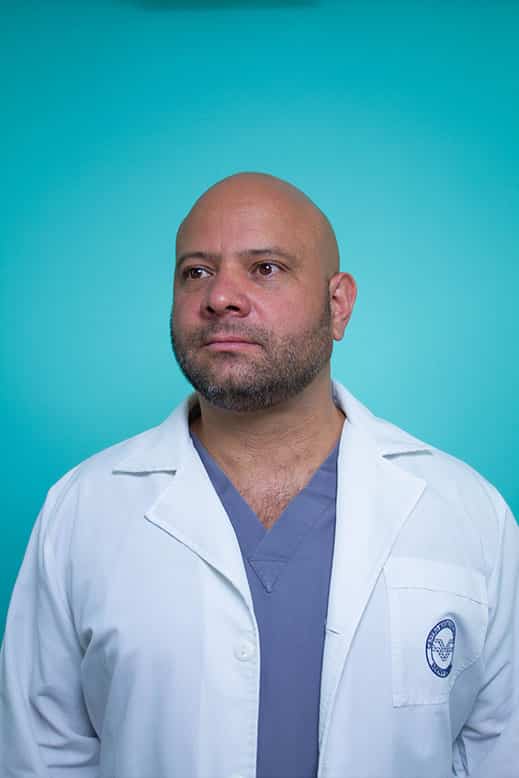Dental implants are a very effective solution for people with missing teeth.
They not only provide aesthetic benefits, but also functional ones, since they contribute to the correct bite of the jaw.
The results are very positive and it is a precise and painless procedure thanks to local anesthesia.
However, among the problems that we can encounter after placing a prosthesis is the rejection of the implants.
Many people are averse to undergo this type of surgery for fear of implant rejection.
But really, what is this rejection and what are its symptoms?
What exactly is dental implant rejection?
The truth is that the designation “rejection” is not the most appropriate.
In reality, it is a poor healing of the gum and not an immune reaction against titanium, as could happen in an organ transplant rejection.
This material is biocompatible with the human organism, so it does not produce allergies.
Steps to place implants
Enlarge image
PARTS OF THE IMPLANT
In a procedure in which everything has gone well, the patient needs approximately three months of healing after the implant is placed.
During this time, a temporary cover can be worn until it is time for the implantologist to place the final crown.
One of the first symptoms of rejection is the formation of a white tissue that interposes itself between the bone and the titanium implant.
This tissue ends up surrounding the entire prosthesis and makes it impossible to load the crown on it, since it will not have a secure hold and, due to the movement, it will end up falling.
If this happens, the professional proceeds to remove the implant to clean the fibrous tissue in depth and then place a new prosthesis with a good result.
Take care of your new teeth
By following your dentist’s instructions and maintaining proper cleaning habits, an implant can last a lifetime.
Origin of rejection
The truth is that rejection can be caused by different factors: the appearance of peri-implantitis, complications during osseointegration, smoking, insufficient oral hygiene, etc.
Depending on the cause, the implantologist will have to assess which is the most appropriate solution for each patient, although the most common is to remove the implant and replace it.
The prosthesis is placed in phases
Enlarge image
PHASES FOR PLACING A PROSTHESIS
What are its characteristics?
Due to the lack of knowledge about the causes of rejection, it is possible that its symptoms are confused with other oral diseases.
- A rejection is not an infection nor is it the consequence of one.
- It is important to reiterate that the incorrect healing mentioned above does not have its origin in any type of allergy caused by the material of which the prosthesis is made.
- As we have pointed out, the positive outcome of dental implants is very high, and rejection occurs in only 2.5% of cases.
- People suffering from diabetes and those who smoke more than 10 cigarettes a day are more likely to face implant rejection. But even so, they do not have to suffer from this problem.
- It is true that patients who have already had such a complication with their prosthesis are more likely to have it again. In spite of this, the chances of success are still above 90%.
The rejection of a dental prosthesis has its origin in an incorrect healing after the procedure.
Symptoms of implant rejection
Our body warns us when something is wrong.
In the case of implant rejection, we can be aware of several warning signs.
- The prosthesis is mobile during the healing period.
- The person notices slight discomfort and pain when pressing the implant. It is usual to notice a slight affliction in the postoperative period, but it subsides after a couple of days.
- Another symptom is to have pain on the day of the impressions. At this appointment, and once the implant has been osseointegrated, the dentist scans the patient’s mouth so that a porcelain crown can be designed to fit the patient’s needs.
Call Us and Solve your Doubts About Implants
Can the rejection of a prosthesis be avoided?
Once we know what a rejection is, the next question that is logical to ask is if there is any possibility to avoid this problem.
The most advisable thing to do to avoid having complications with implants, and also with any other oral affliction, is to follow these tips:
- Maintain proper oral hygiene at home: apply a good brushing technique and use daily mouthwashes.
- Visit your dentist regularly for a check-up to detect any disease as early as possible. In addition, hygienists will clean your teeth when you need it, helping to maintain a healthier mouth.
- Avoid bad habits, such as smoking.
Full mouth dental implants
Enlarge image
FULL MOUTH DENTAL IMPLANTS
Conclusions regarding the rejection of dental implants
The incidence of non-osseointegration is rare, occurring in only 2.5% of cases.
If it happens, the problem has an easy solution: replace another implant and wait 3 months until it heals.
Remember that if you are a smoker or diabetic you will have a higher risk of implant failure.
You can recover your smile by resorting to implants, since they are a simple and fast procedure that will help you restore your smile and the functionality of your mouth.



